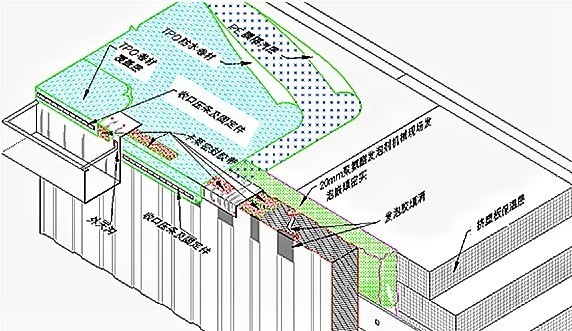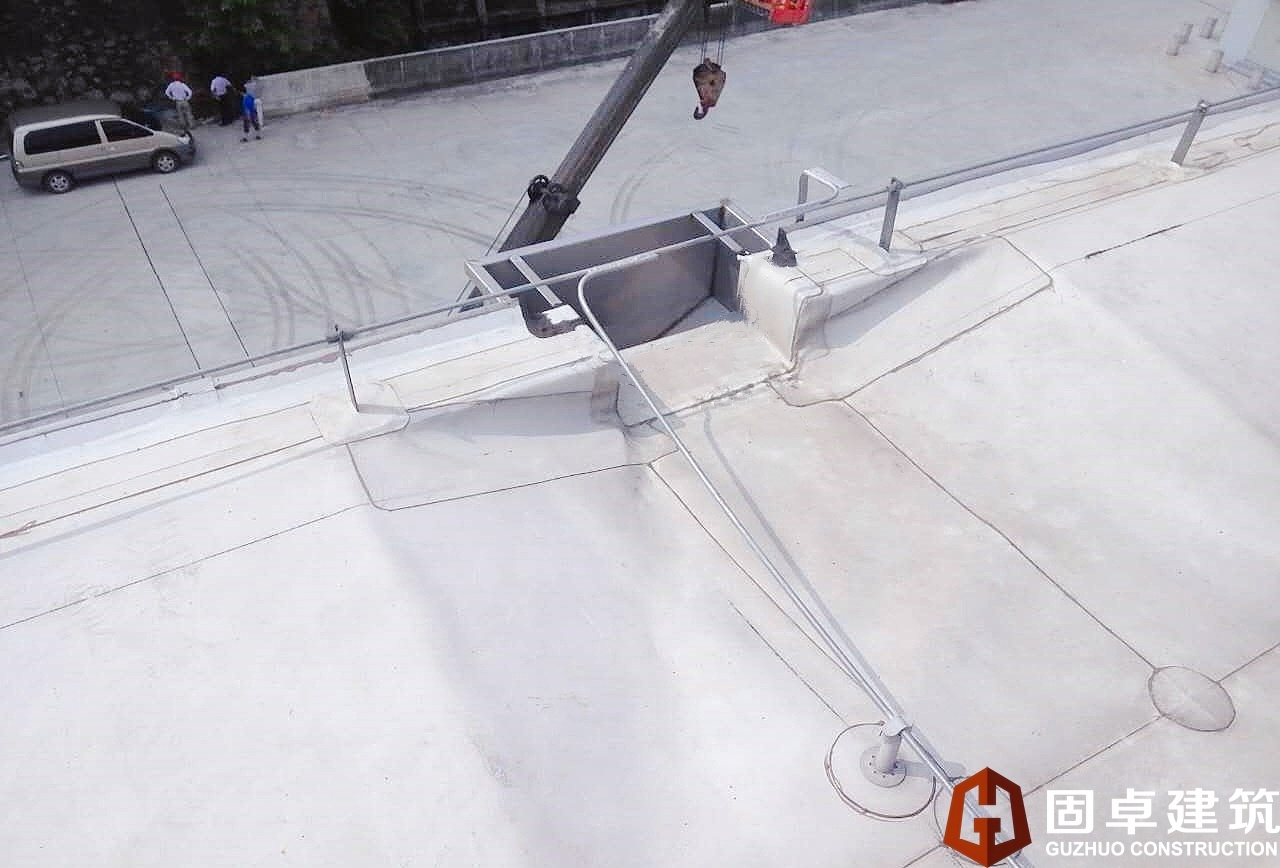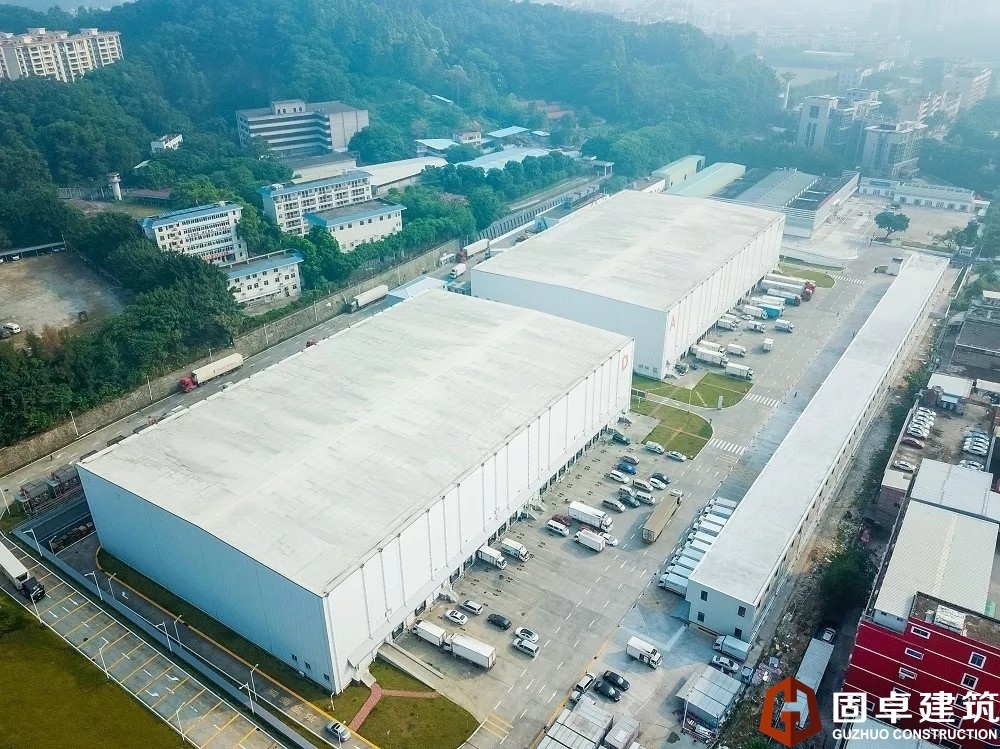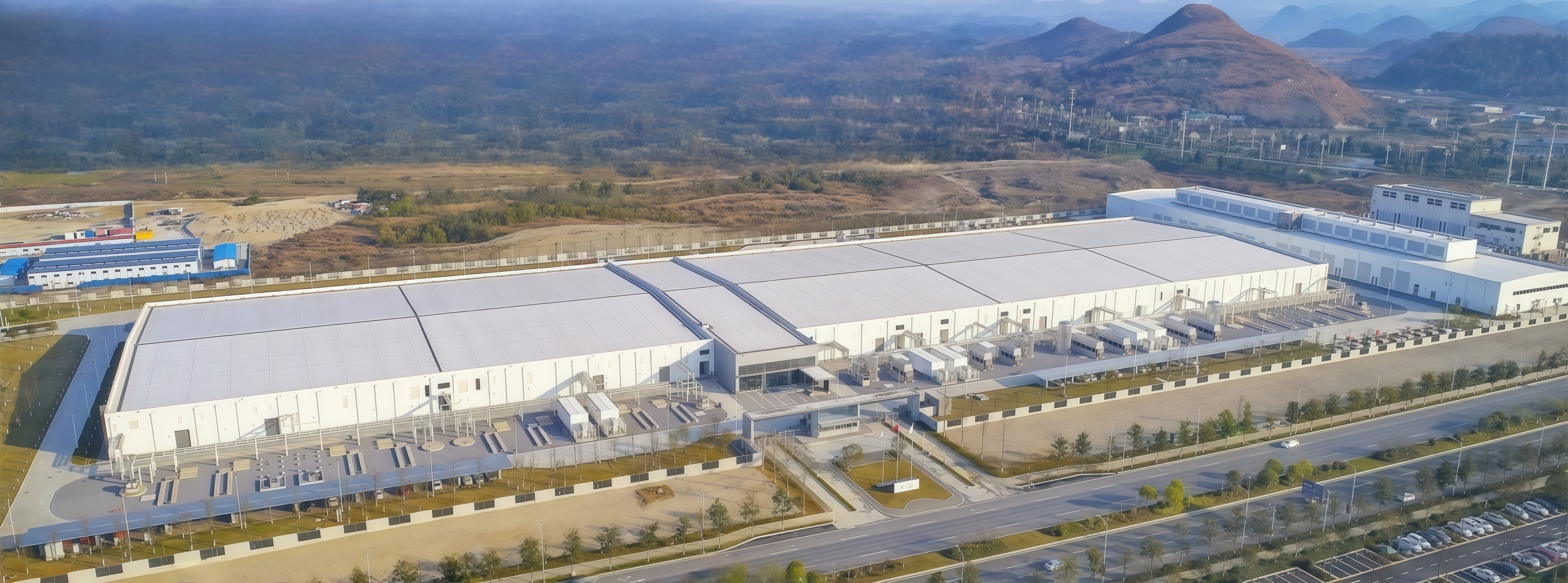Typical Roof System Applications for American-style External Insulation Cold Storage
Abstract: Compared with internal insulated cold storage, Steel structure external insulation cold storage has higher requirement for waterproofing and air tightness because of its complicated structure. The article mainly introduces advantages, application and waterproof details of TPO membrane system in Guangzhou Changyun Cold Storage project.
Key words: Fabricated cold storage; TPO Roof; Roof Details
1. Project Overview
In recent years, with the improvement of people's living standards and the development of the frozen food industry, cold chain logistics has developed rapidly in China, which has also promoted the continuous heating of the construction of cold chain infrastructure such as cold storage and low-temperature distribution centers. Steel structure external insulation cold storage is favored by the market due to its flexibility, compact structure, short construction period, low investment, and quick results.
The Guangzhou Changyun Storage Logistics Cold Storage project is located in Tianhe District, Guangzhou City. The main building consists of two double-layer American-style external insulation steel structure cold storages, equipped with refrigerated warehouses, constant temperature warehouses, and frozen warehouses, with temperature zones ranging from -25°C to -15°C, fully automatic temperature control. The single cold storage building covers an area of about 17,000 square meters, with a volume of about 95,000 cubic meters, making it the largest cold chain logistics center in downtown Guangzhou. The main framework of the warehouse is entirely steel structure, and the project was completed and began operation at the end of 2016.
2. Introduction to Roof System Structure and Characteristics
2.1 System Structure
According to design requirements, the cold storage roof panel of the Guangzhou Changyun project uses a waterproof thickness of 0.9mm B-36 type galvanized profiled sheet, with the roof sloping to both sides at a gradient of 3%. The waterproof design of the roof is a single-layer TPO waterproofing method, using mechanically fixed TPO waterproof membrane technology. The mechanical fixation uses plastic sleeves filled with polyurethane foam to prevent condensation at the screw points. The insulation layer consists of three layers of 100 + 100 + 50mm thick XPS insulation boards, and a PE vapor barrier layer is added between the waterproof membrane and the insulation board, with a layer of 40mm thick high-strength rock wool insulation board as a fire isolation zone, ensuring that the roof meets national fire safety standards.
The overlapping parts of the TPO membrane are welded together using hot air welding, ensuring that the strength of the welds is consistent with the performance of the base material. The wind load calculations for the roof are based on national standards and specific project conditions, and the detailed nodes of the roof use specialized homogeneous TPO membranes for construction, creating an overall waterproof effect.

2.2 Introduction to the Characteristics of TPO Single-Layer Roof Waterproof Insulation System
The quality of the construction of the roof insulation waterproof layer will directly affect the insulation effect of the entire cold storage, especially the vapor barrier performance of the roof. Improper construction can lead to frost and ice formation on the roof, ultimately damaging the waterproof insulation performance. The TPO single-layer roof system has good air tightness and a continuous and consistent insulation layer, solving the problems of poor sealing, discontinuous insulation, and leakage found in traditional steel plate roofs. It has significant differences and advantages over traditional cold storage roof waterproof insulation forms:
(1) Unlike the internal insulation form of traditional cold storage roofs, the TPO single-layer roof system is an external insulation form, effectively avoiding issues such as discontinuity or compression of insulation materials at the main structural components.
(2) The TPO roof system has excellent air tightness, with TPO membranes completely fused together through hot air welding, preventing outdoor moisture from penetrating the insulation layer.
(3) Due to the use of relatively rigid, high thermal resistance XPS extruded insulation boards and lightweight flexible TPO waterproof membranes that have minimal compressive effect on insulation, the white TPO membranes have excellent thermal reflection properties, effectively avoiding condensation.
3. Key Points of Construction Technology
3.1 Preparation and Base Treatment Before Construction
Before construction, the steel plate of the roof base must be cleaned to remove sharp foreign objects, meeting the installation specifications for steel structures and flexible roofing requirements. The cold storage panels and gutter areas should be straight, without bending or unevenness, and must pass inspection. Check the surroundings of the building and the openings on the roof to ensure that the base treatment meets design requirements.
3.2 Laying and Fixing of XPS Extruded Insulation Boards
The cold storage roof differs from general single-layer roof systems in that it needs to prevent moisture exchange. All insulation boards must be tightly butted, with staggered seams between layers, with a minimum spacing of 30cm; the edges of the roof and other irregular areas should be sealed with on-site foamed insulation materials.
To reduce the likelihood of cold bridges forming on the roof, the insulation boards in this project are fixed using specialized screws to ensure a large stress area and minimize damage to the insulation boards. Polyurethane foam sealant should be used to fill the gaps around each fixing screw. When laying the insulation boards, start from the ridge and work from high to low.
Special attention should be paid to leaving a 20mm wide gap around the edges of the insulation boards laid on the roof in the cold storage area, around corners such as panel edges and equipment foundations, and high-strength polyurethane foam should be used to fill the gaps tightly.
3.3 Laying and Fixing the Vapor Barrier Layer
The PE vapor barrier membrane should be lapped in the direction of water flow, with a lap width of 8cm, and connected with double-sided tape. The edge of the eaves should be adhered to the wall panel with tape to form a sealed layer. This provides excellent wind resistance and vapor permeability, and when used with the roof insulation waterproofing, forms an overall vapor barrier effect.
3.4 Construction of TPO Waterproof Membrane
1) Laying of TPO Membrane
First, pre-lay the loose roll material according to the contour on the base layer, ensuring it is flat and straight without distortion, and make appropriate cuts. Place the roll material for 30 minutes to allow it to freely contract from the stretched state, eliminating the stress generated during the production curling process, and avoiding adverse consequences from future shrinkage. The laying direction of the roll material should be perpendicular to the long edge of the profiled steel plate. The lap seams parallel to the ridge should overlap in the direction of water flow, while the lap seams perpendicular to the ridge should overlap in the direction of the maximum wind frequency of the year. Precise layout should be conducted before construction to minimize joints, and where joints are present, they should be staggered at least 30cm apart, with overlaps following relevant specifications.
2) Fixing of TPO membrane
The large roll material is laid according to the design direction, and the long edges must be fixed to the pre-marked points with mechanical fixing nails and spacers, with a minimum edge distance of 10mm from the roll material edge. The fixing screws on the roof should be positioned according to the wave spacing of the metal roof panels, ensuring that each wave peak is fixed with a fastener that penetrates the steel plate by ≥25mm. Use fixed sleeves and anti-corrosion coated fasteners to secure the TPO waterproof membrane, and the inside of the sleeve must be sealed with polyurethane foam.
3) Welding of TPO membrane
Membrane welding: All overlaps of the membrane are welded using hot air welding, and the joining surfaces of the weld seams should be cleaned, free of moisture, oil, and contaminants. It is best to complete the welding of the membrane laid on the same day; for interfaces left after daily construction, they must be protected with tape and effective methods to avoid rain and moisture. Large roll membranes are welded using automatic welding machines, while detailed nodes are welded using handheld welding machines.
3.5 Treatment of main detailed nodes in cold storage
The internal temperature of the steel structure external insulation cold storage building is maintained below -15 °C for a long time, while the outdoor temperature in summer often exceeds 35 °C, resulting in significant differences in indoor and outdoor temperature and humidity. Therefore, a waterproof layer and vapor barrier need to be properly set up to prevent moisture exchange. To avoid condensation caused by external gas convection, proper sealing and waterproofing treatment should be carried out at weak nodes such as roof protruding pipes, brackets, both ends of expansion joints, between insulation boards, and at the connection between the roof and walls.
1) Treatment of roof eaves node
All valleys of the external wall panel below the roof eaves must be filled with polyurethane foam to prevent air from entering the interior through the valleys; the gaps between the insulation board and the external wall panel must be filled with foam; the roof membrane should be fully adhered to the top cover plate of the external wall panel, and the ends should be connected to the rainwater outlet with a covering strip.

2) Treatment of roof slope node
This roof system uses an external drainage basin for drainage, so XPS extruded boards are used around the rainwater outlet for slope drainage treatment, while also reducing the possibility of water accumulation on the roof.

3) Treatment of internal and external corner nodes
Special TPO internal and external corner prefabricated parts are used to treat nodes, ensuring long-term waterproofing effectiveness.
4. Conclusion
A high-quality roofing system and a professional, meticulous construction process and quality management ensure the safe and efficient operation of this external insulation cold storage project. This project was completed in 2016 and entered the cooling adjustment phase. After four years of operation, the roof insulation waterproof layer has not shown any signs of ice formation or cold running, demonstrating excellent insulation and waterproof performance, receiving unanimous praise from the general contractor and all parties involved.

Next Page
Next Page
Related news



